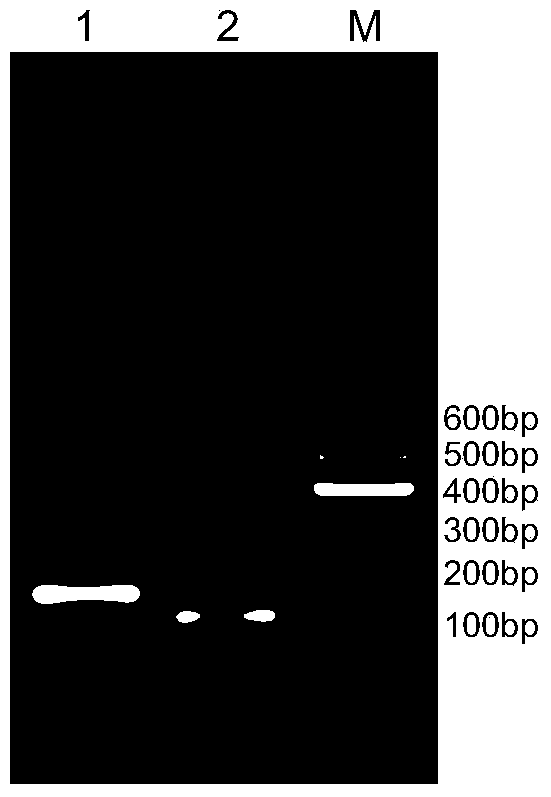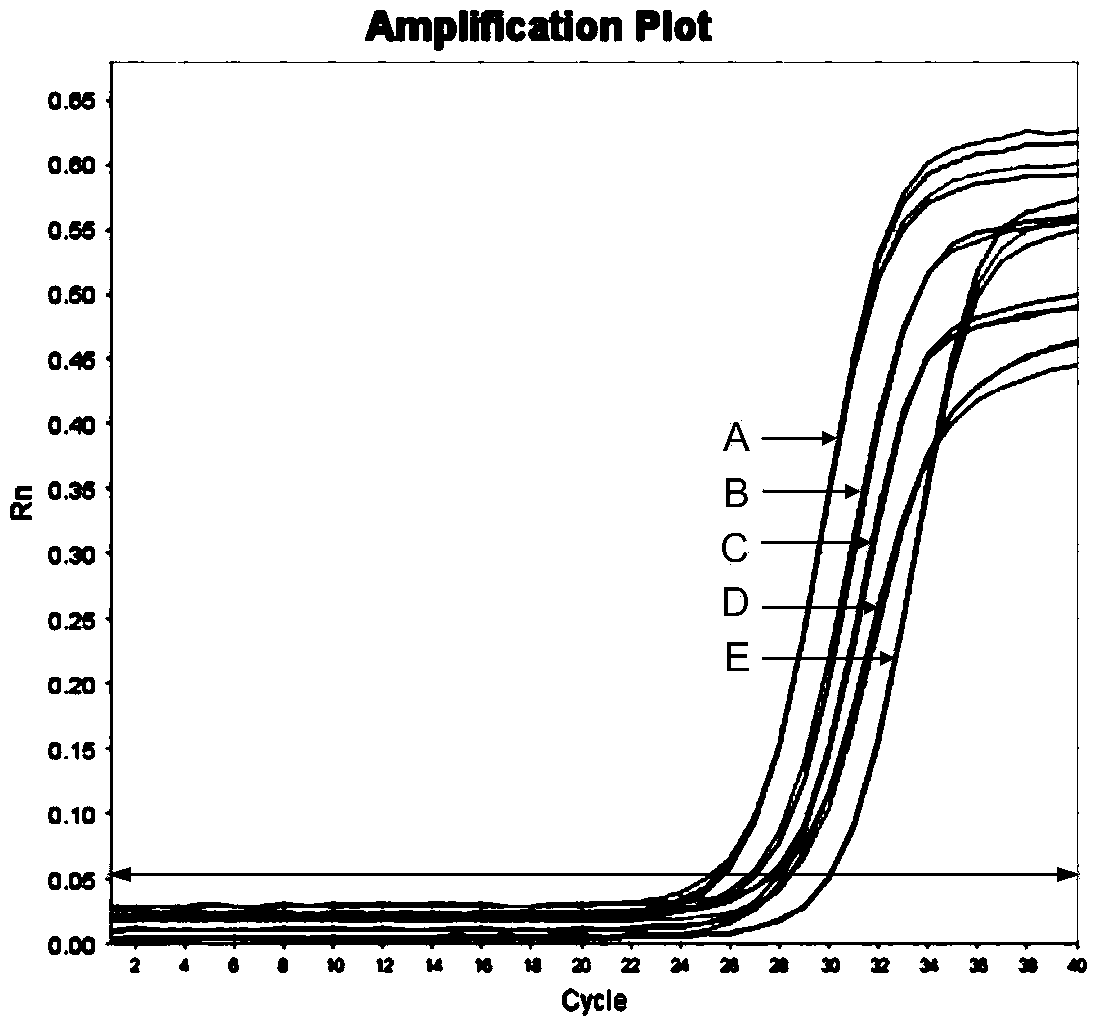Method for detecting resistance of diamondback moth to Bt insecticidal protein Cry1Ac based on ABCC1 gene and kit thereof
A technology of insecticidal protein and detection method, which is applied in the field of bioengineering, can solve the problems of low sensitivity, long cycle time, high material requirements, etc., and achieve the effect of high sensitivity, accuracy and strong specificity
- Summary
- Abstract
- Description
- Claims
- Application Information
AI Technical Summary
Problems solved by technology
Method used
Image
Examples
Embodiment 1
[0047] Detection of midgut cDNA samples of 4th instar larvae of DBM1Ac-S and SZ-R by real-time fluorescent quantitative PCR technology and establishment of the detection kit and its application method.
[0048] 1. Taking the conserved region of the ABCC1 gene in the midgut of Plutella xylostella as the target sequence (SEQ ID NO.1), according to the principles of real-time fluorescent quantitative PCR primer design, the specific fluorescent quantitative primer sequence was designed as follows:
[0049] Forward primer (qCC1-F): 5′-GGTGGTGCTCATCTGCTACCTCAT-3′ (SEQ ID NO.2);
[0050] Reverse primer (qCC1-R): 5′-ATCCTGACACGCTCATCGGTTTT-3′ (SEQ ID NO.3);
[0051] The specific primer amplifies the fragment sequence as figure 1 As shown, its amplification specificity is as figure 2 (Among them, 1: the PCR amplified fragment of the target gene ABCC1; 2: the PCR amplified fragment of the internal reference gene L32; M: Marker I.) As shown in the figure, it can be seen from the figu...
Embodiment 2
[0087] The availability of the kit and detection method in Example 1 was verified by other three Bt-resistant diamondback moth populations DBM1Ac-R, NIL-R and SH-R. The specific experimental process is shown in Example 1.
[0088] The final fluorescent quantitative PCR reaction test results are as follows: Figure 6 Shown in, wherein, A: negative control sample of midgut cDNA of the 4th instar larvae of the Plutella xylostella population DBM1Ac-S sensitive to Bt insecticidal protein in A: in embodiment 1; positive control sample of midgut cDNA of 4th instar larvae of Plutella xylostella population SZ-R; C: cDNA test sample of midgut of 4th instar larvae of Plutella xylostella population SH-R resistant to Btk; D: insecticidal to Bt The midgut cDNA of the 4th instar larvae of the Plutella xylostella population DBM1Ac-R resistant to the protein Cry1Ac to be tested; E: the 4th instar larvae of the near isogenic line population NIL-R of the Plutella xylostella resistant to the Bt i...
PUM
 Login to View More
Login to View More Abstract
Description
Claims
Application Information
 Login to View More
Login to View More - R&D
- Intellectual Property
- Life Sciences
- Materials
- Tech Scout
- Unparalleled Data Quality
- Higher Quality Content
- 60% Fewer Hallucinations
Browse by: Latest US Patents, China's latest patents, Technical Efficacy Thesaurus, Application Domain, Technology Topic, Popular Technical Reports.
© 2025 PatSnap. All rights reserved.Legal|Privacy policy|Modern Slavery Act Transparency Statement|Sitemap|About US| Contact US: help@patsnap.com



